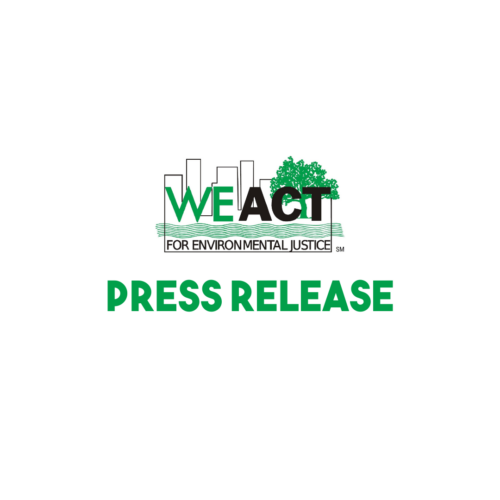New Law is the First Step in Getting Rid of New York’s Lead Water Pipes
FOR IMMEDIATE RELEASE
January 8, 2024
Contact: Chris Dobens, 718-679-8542, chris@weact.org
NEW YORK – WE ACT for Environmental Justice applauds New York State Governor Kathy Hochul for signing the Lead Pipe Right to Know Act (S.5512/A.6115) over the holiday break. WE ACT for Environmental Justice, as part of the JustGreen Parntership and the Lead Free Kids New York coalition, had been advocating for this legislation because environmental justice communities face a higher incidence of lead poisoning. This new law requires public water systems to take inventory of the service lines – the water pipes – in their system to identify which ones contain or may contain lead. And it requires the New York State Department of Health to make an inventory of these lead service lines publicly available, with interactive maps, to make them easier to replace.
Why This Matters
While the overwhelming majority of lead poisoning in New York State comes from lead-based paint, there is still a significant threat of lead poisoning – especially among children – from drinking water service lines made of lead, which was a common practice as recently as the 1980s. Service lines are pipes that connect from the water main to buildings and homes.
New York State leads the nation in cases of children with elevated blood levels. Twelve percent of the children born in the state in 2019 – 28,820 children – have been diagnosed with blood lead levels greater than 2 micrograms per deciliter. Childhood lead poisoning rates for communities across the New York State are five to six times higher than those in Flint, MI at the peak of its water crisis.
It’s estimated that New York State has around 360,000 lead pipes still delivering water to people’s homes, making it the fourth highest in the nation in terms of lead service line usage. And these lines are located primarily in low-income communities and communities of color.
But you can’t replace these pipes, or even estimate the magnitude and cost of such as task, without first identifying where these pipes are located. By passing this law requiring public water systems to identify where they have lead or possibly lead pipes, we will then be able to push for legislation to replace them. And the timing is critical, since funds to replace these pipes are currently available through the Inflation Reduction Act and other federal sources.
The Dangers of Lead
Lead is a toxic substance, and children are the most vulnerable to its harmful effects. But there are also pervasive racial and socioeconomic inequities exist in New York’s burden of childhood lead poisoning, with children of color and low-income children disparately impacted by childhood lead exposure. In Buffalo, for example, children from neighborhoods of color are 12 times as likely as children from predominantly white neighborhoods to have elevated blood lead levels. New York’s clear distribution of childhood lead poisoning along racial and socioeconomic lines affirms that lead poisoning is a grave racial and environmental injustice – and makes the need to act swiftly to prevent it even more of a moral imperative.
The impacts of childhood lead exposure are lifelong and irreversible. They can include serious neurological and physical damage that results in permanent learning difficulties, hearing loss, behavioral issues, lowered ability to concentrate, and impaired academic performance. Other impacts include health issues such as anemia, hypertension, immunotoxicity, renal impairment, and toxicity to reproductive organs.
In addition to the horrific human toll on children and their families, childhood lead poisoning produces a tremendous economic burden. Lead exposure among New York children born in 2019 is projected to carry an estimated $6.4 billion lifetime economic burden due to reduced lifetime productivity, premature mortality, and increased spending on health care utilization, education, and social assistance.
# # #
WE ACT for Environmental Justice is a Northern Manhattan membership-based organization whose mission is to build healthy communities by ensuring that people of color and/or low-income residents participate meaningfully in the creation of sound and fair environmental health and protection policies and practices. WE ACT has offices in New York and Washington, D.C. Visit us at weact.org and follow us on Facebook, Twitter, and Instagram.
